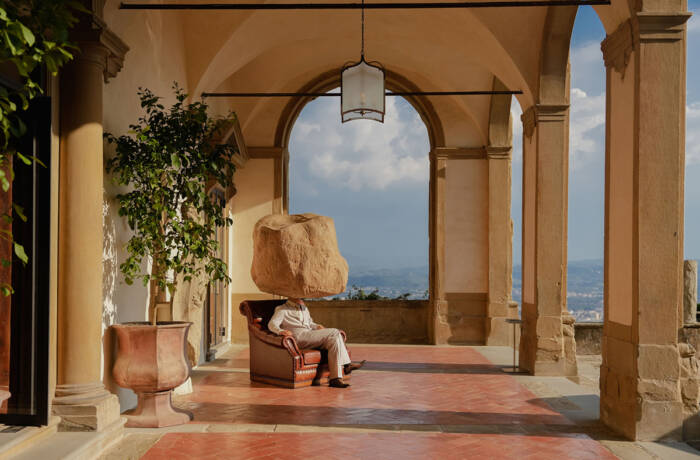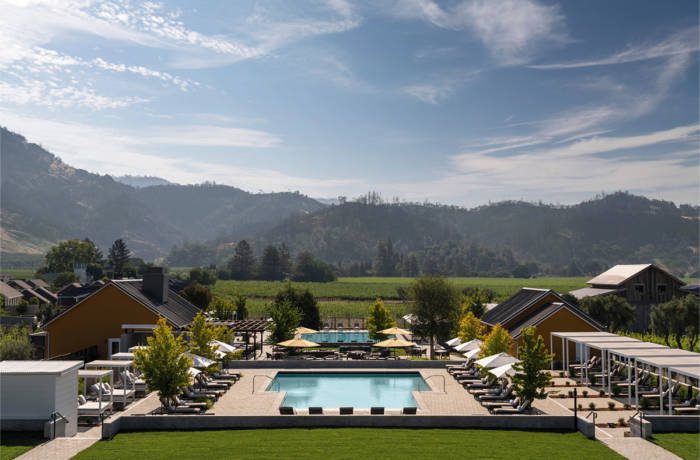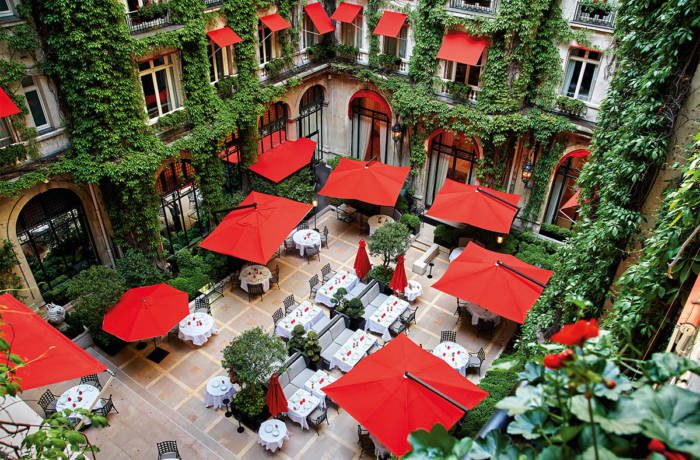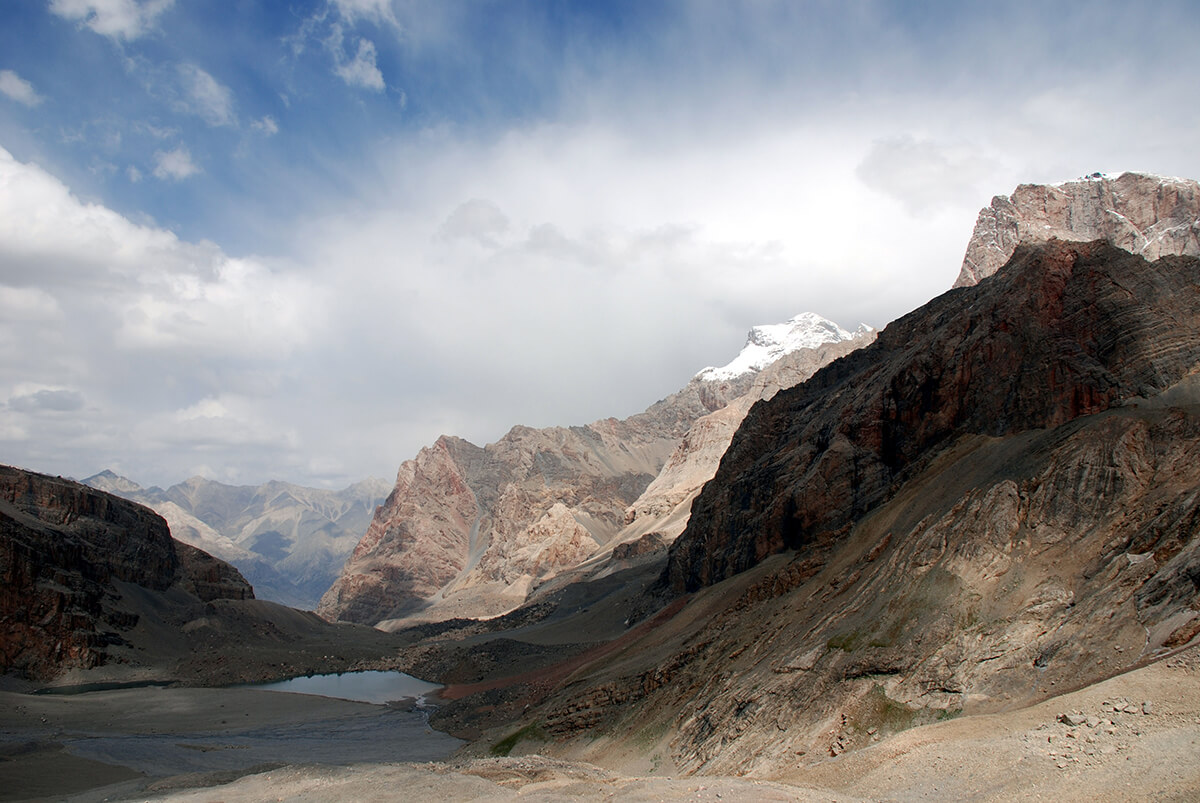
The Fann Mountains in western Tajikistan
From jagged-peak mountain ranges to glacial lakes and towering valleys, LUX Editor-at-Large Gauhar Kapparova explores Tajikistan’s incredible landscapes – perfect for thrill-seeking adventurers
Think of the world’s most iconic highways and what springs to mind? The Great Ocean Road in Australia perhaps, or Route 66 from Illinois to California in the US. What probably won’t feature on the list is the little-visited but spectacular Pamir Highway – the unofficial name for the Soviet-constructed M41 – in Tajikistan. It’s a wild, remote stretch that was once part of the ancient Silk Road and connects the country’s capital Dushanbe to Khorog, the largest town in the Pamir Mountains, and beyond that, with the Kyrgyzstan city of Osh.
Sometimes referred to as The Roof of the World because of its high altitude (up to 4,655metres at the Ak-Baital Pass, which makes it the second-highest road anywhere), the Pamir Highway weaves through the autonomous eastern region Gorno-Badakhshan Autonomous Oblast, and a landscape that veers from lush river valleys and pristine lakes one minute to snow-capped mountain peaks the next. In other words, this is the stuff of hardy adventurers’ dreams.
Follow LUX on Instagram: the.official.lux,magazine
“Tajikistan is probably the least known of all the central Asian ‘stan’ countries – and that’s saying something,” says Marc Leaderman, product and operations director at Wild Frontiers, an expert tour operator that offers tailor-made trips here. “If you look through history and the area that it occupies it has always played a frontier role. It was the southernmost extremity in Tsarist Russia during the Soviet Union; then when the Soviet Union collapsed, many of the central Asian states fell into a bad way. Tajikistan has come a long way since then, but I think that’s one of the reasons it’s not so well known – which is an exciting thing in this day and age.”
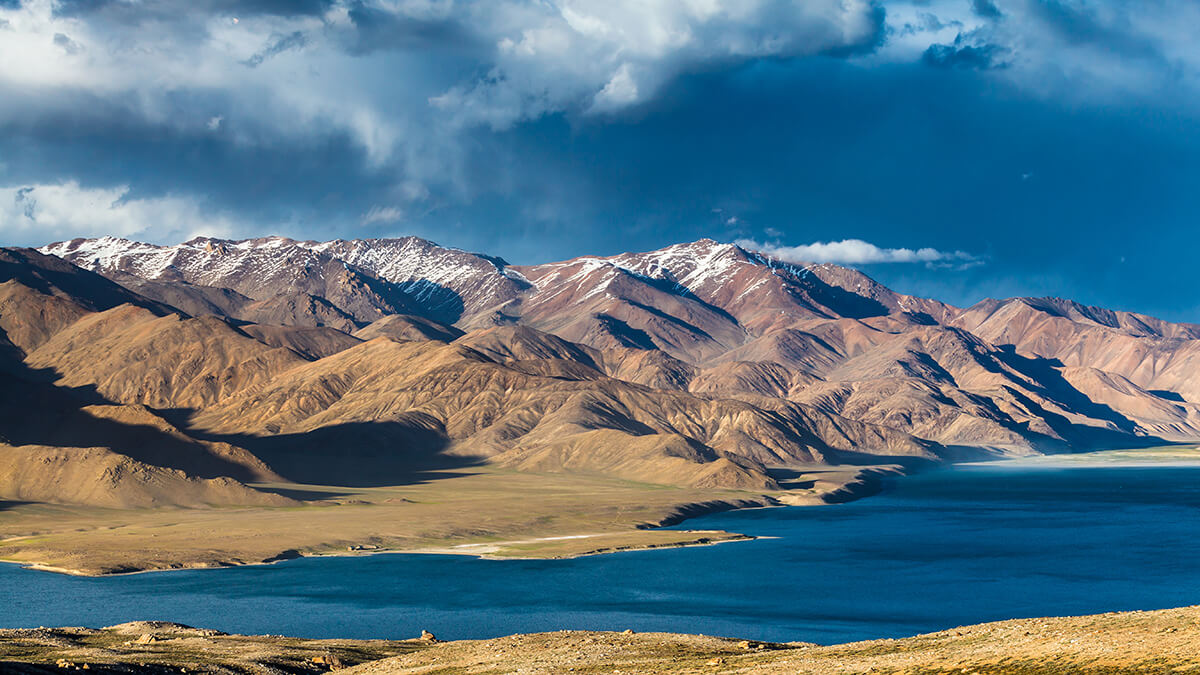
Yashikul Lake
The country’s main draw is the Pamir Highway, and for good reason. “The Pamirs are one of the least-known mountain ranges in the world; the high plateaus are extraordinary,” continues Leaderman, who has visited the country a handful of times in the past nine years. “The highway is dirt track and washed away in places, so it’s a real adventure travelling through the region. People come for the mountain scenery, to go trekking and to meet the Tajik people who draw their heritage from Persia and speak a language that closely resembles Farsi.”
From the stark Bartang Valley where friendly villagers are known for their hospitality, to Karakul, set on the eastern side of vast Karakul Lake, where life carries on as it has for centuries (women collect water from the well, men work in the fields and tend livestock), this is a raw, otherworldly route with epic surroundings that often feels like it has been preserved from the past. In Murghab, the region’s largest town and trade centre, there’s a small mosque and a makeshift bazaar operating out of old metal shipping containers where you can buy everything from fresh vegetables to mobile phones. In Rangkul, there is a salt lake and giant sand dunes that you can explore on camels. And in Bulunkul, a settlement known for being one of the coldest places in Central Asia, you can hike up a hill to glimpse the shimmering blue waters of Yashilkul Lake.
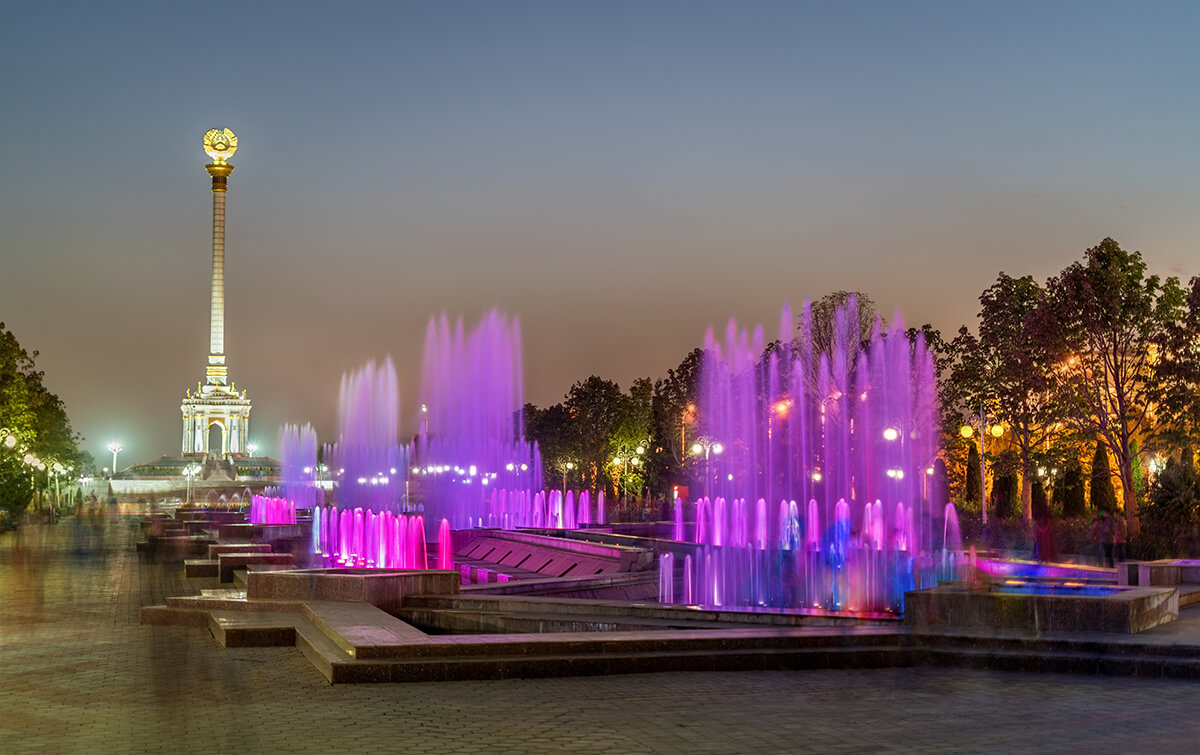
Dushanbe’s fountains and independence monument
The starting point for most travellers visiting this landlocked country – it is surrounded by Afghanistan, China, Kyrgyzstan and Uzbekistan – is the delightful city of Dushanbe (meaning ‘Monday’ after the weekly market that was once held here), which has the grand tree-lined Rudaki Avenue and the River Varzob cutting through its centre. It is a city in flux, with new skyscrapers and malls under construction to replace the Soviet-era buildings as part of a new-look urban development plan. This is one of the best places for shopping: try the Noor Art Gallery at the Hyatt Regency hotel for locally made textiles, funky jewellery and beautiful carpets.
Must-visit sites include leafy Rudaki Park, with its statue of revered Persian poet Rudaki in the rose garden; the gold-decorated monument of Ismoil Somoni, built to commemorate the founder of the Samanid dynasty (the Tajik national currency, the somoni is named after him); and hilltop Victory Park with panoramic views of the city below. There is also a trio of museums: the National Museum, the National Museum of Antiquities (don’t miss the 13-metre sleeping Buddha) and the Ethnography Museum, featuring a collection of traditional Tajikistan clothing. All three offer fascinating insights into the country’s cultural heritage.
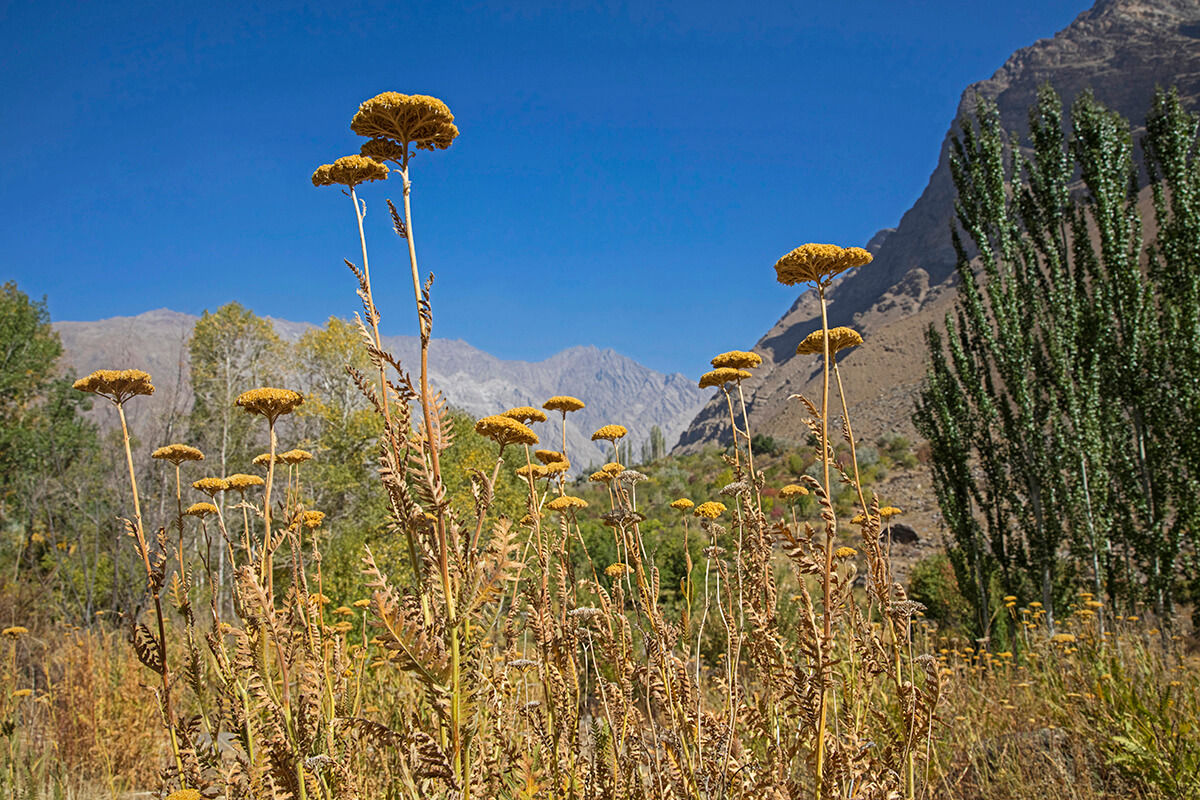
Wildflowers in the Pamir Botanical Gardens
There is another museum to be found in Khorog – the second, smaller town at the other end of the Tajikistan section of the Pamir Highway. The Museum of Khorog, which houses the first piano in the Pamirs (the story goes that 10 Russian soldiers spent two months carrying it over the mountains from Osh in the early 20th century). The town’s other highlights include the Pamir Botanical Garden; the City Park, which features a pond and tea house; and the Khorog bazaar, a morning market in a central building that spills out into small kiosks by the river, where you can buy souvenirs such as traditional woollen socks and velvet Pamir hats.
Read more: We test drive the Maserati GranTurismo MC on a road-trip through France
From there, many visitors take a detour to the Wakhan Valley Corridor, a land of pretty villages, hot springs and impressive fortresses (the Bibi Fatima spring, just above the Yamchun Fortress is perhaps the most famous) and with views of the Hindu Kush, the mountains that mark the Afghanistan-Pakistan border.
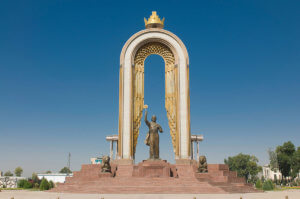
A golden monument to Ismoil Somoni in Dushanbe
Cities aside, the other place worth visiting is the Fann Mountains, where the peaks soar to more than 5,000 metres. Not far from Dushanbe and more accessible than the Pamir Highway, the Fann Mountains are known for their series of seven lakes. The jewel in the crown is glacial Iskanderkul Lake (60 percent of the water resources in Central Asia originate from glaciers in Tajikistan) named after Alexander the Great during his campaign to defeat the Persian Empire in 334 BC. Several folklore legends are connected to the lake: the first is that during the campaign against the regions of Sogdiana and Bactria the late conqueror faced resistance in the mountain villages so ordered to change the flow of the river to drown the disobedient – and this is how the lake was formed. Another goes that this is where his horse Bucephalus drowned during battle so, at midnight under a full moon, locals can hear the horse neigh.
Read more: 5 exhibitions to see in London this month + 1 to miss
There are many treks across the mountains, all of different lengths and aimed at different capabilities. On a rare piece of flat ground is the city of Penjikent, often labelled the ‘Pompeii of Central Asia’ for its archaeological significance – it contains the ruins of an ancient town that was once a city on the Silk Road. From here, it’s a hop over the newly opened border to Uzbekistan.
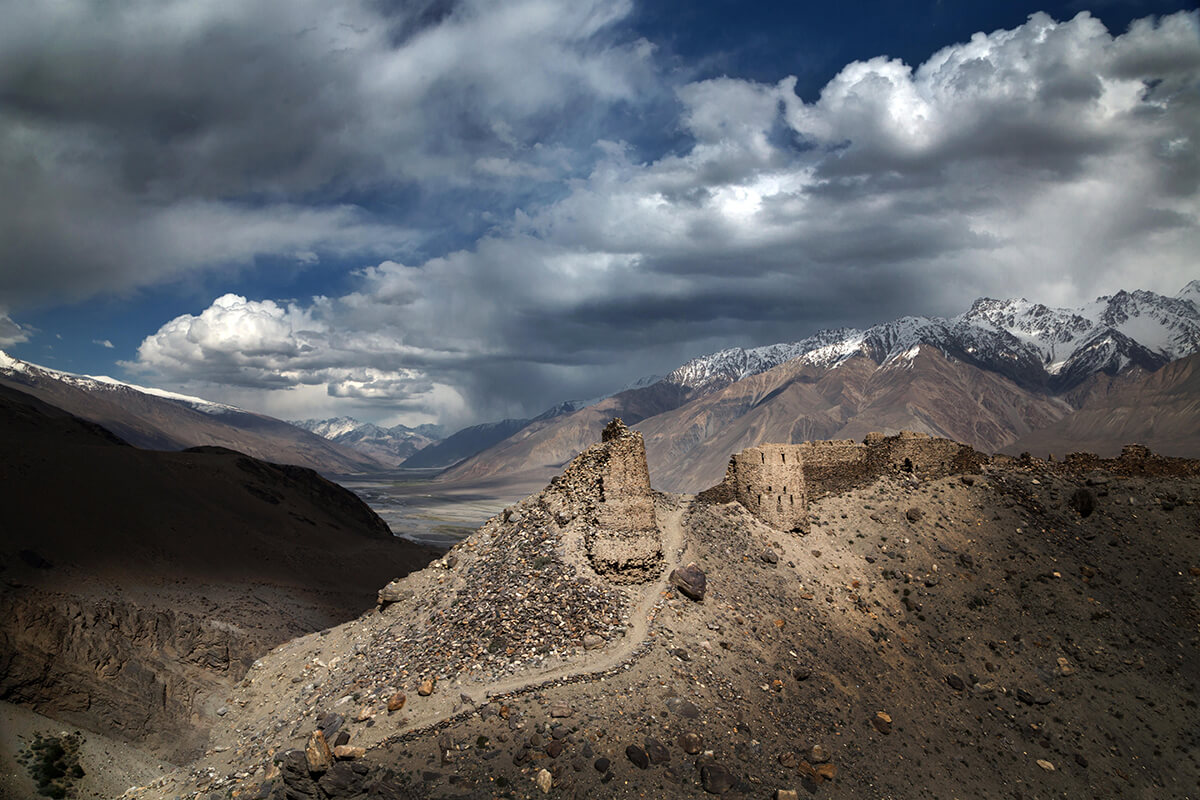
Yamchun Fortress was once an important point on the ancient Silk Road
“What’s really exciting is that this year, the border has opened for the first time in about five years,” says Leaderman. “It means that there is now the chance to combine visiting these two great countries easily. The Uzbek city of Samarkand is only an hour’s drive from Tajikistan and a real highlight. It’s great for culture but quite flat and scenically not so exciting, but together with the amazing mountain ranges in Tajikistan, it makes for a wonderful trip.”
Where to stay: Hyatt Regency Dushanbe
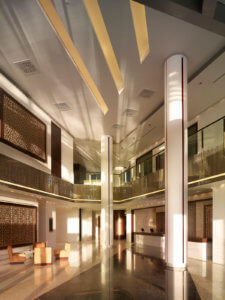
Base yourself at the Hyatt Regency Dushanbe
Within the grounds of City Park and adjacent to Lake Komsomolsee, the Hyatt Regency Dushanbe is the smartest hotel in the capital. Contemporary rooms come with floor-to-ceiling windows overlooking the lake, mountains or presidential palace, and grey marble bathrooms with heated floors. There is a lobby bar and lounge with an outside terrace, a pastry shop for sweet treats and the Focaccia Grill, which features a mix of international and Mediterranean dishes on the menu (watch as chefs at various stations prepare the daily specials). The 24-hour concierge is on hand to help plan what to see and do in the city and beyond; then when you return, the indoor heated swimming pool, sauna and spa is the perfect place to relax. Other services and amenities on offer include a gym and a fully-staffed business centre.
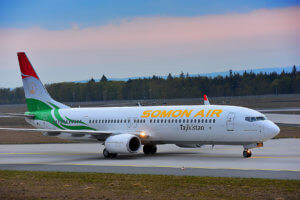
Somon Air is Tajikistan’s national carrier
How to get there: Somon Air
The national airline operates regular flights to and from Germany, Turkey, China and Russia.
This article was originally published in the Autumn 2018 issue. View more content from The Beauty Issue

